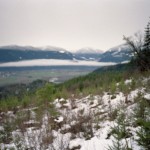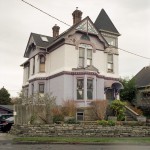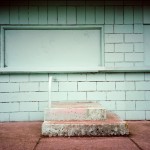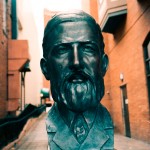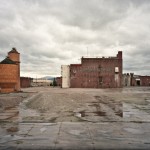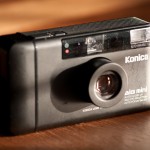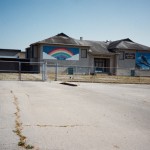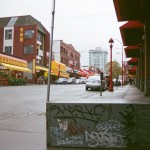Jan
30
2013

I had hoped for better results from the Yashica T AF with its 35mm Carl Zeiss T* optics but I was unfortunately let down by the focus system. My copy no longer focuses to infinity. The reason for my optimism came from several factors beyond the lens; It has a manual ASA setting that can by easily used as a rudimentary exposure compensation system, it only fires the flash when you activate it rather than defaulting to on like so many other point and shoot cameras including the fantastic Yashica T3. Aesthetically I like the camera too for its angular glossy plastic and smoked glass lens cover that swings away to reveal the lens for each exposure, this all seems like it could only have sprung from the early 1980’s.
Back to my copy of this camera, only where I pointed the camera at nearby objects did it achieve correct focus, so all the shots into the distance are out of focus. Oh well I will mark the camera with a tag of shame and put it into the parts bin.
5 comments | tags: film, Yashica | posted in Cameras, Photography
Jan
25
2013
3 comments | posted in Painting
Jan
23
2013

The first Rolleiflex was produced in 1928 with a 75mm f4.5 Zeiss Tessar lens according to “Rollei Photography c1952” by Jacob Deschin. My version however is a 2.8 E3 that was likely produced between 1962 and 1965. My E3 has the Schneider Kreuznach Xenotar 1:2.8/80 taking lens. When handled correctly, as in supported stably and exposed well, the images produced have an amazing amount of detail and depth to them.

;
Most of these pictures were taken under pretty adverse conditions with high winds and pelting rain forcing me to use a golf umbrella that was eventually turned inside out by a gust. Never the less the camera did not let me down.
;
;
;
A TLR (twin-lens reflex) is in essence two camera together one for viewing the image and one for taking the picture. The image from the viewing lens is formed on the ground glass after bouncing off the internal fixed mirror. This results in an image that is right side up but reversed from left to right. This takes some getting used to because turning the camera one way or the other has the opposite effect on the screen. Because the mirror is fixed, unlike an SLR, there is negligible camera shake as the leaf shutter is tripped. The captured image is recorded on 120 film as 6cm by 6cm, this square format also takes some getting used to for composition but is a nice break from the traditional rectangular formats of most other cameras. Every aspect of this camera exudes quality it is the standard by which I judge other cameras.

5 comments | tags: film, Photography, Rollei | posted in Cameras, Photography, Processing
Jan
21
2013

The Konica Big Mini is a camera that on first look might be easy to dismiss. It has a boxy appearance and seems just slightly larger than it needs to be. But it also a camera that just works. There is no fiddling or wondering or setting there is just pointing and shooting. This is of course the appeal of cameras of this type with the added benefit that this camera actually does allow adjustments like exposure compensation of +- 1.5 EV. There is a bit of vignetting but that is part of the look from the camera and is not objectionable. There is more information and images from the camera here Konica Big Mini including frustratingly a number of oxymorons that I wrote, but I’m not sure that I’m finding them all anymore.
1 comment
Jan
17
2013
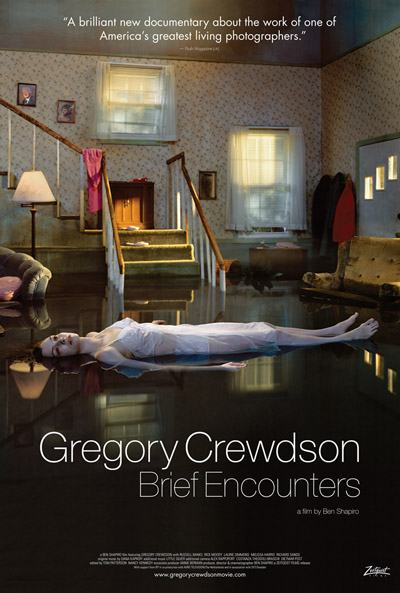
I went to see this documentary at the Vancity Theatre Vancouver this past weekend and wanted to share my thoughts.
Unlike when Toto pulls back the curtain revealing the truth behind the Wizard of Oz, seeing the inner workings of the creation of Gregory Crewdsons images does not dispel the magic. On the contrary seeing the level of effort and detail that goes into making them affords another plane to appreciate them on. Even if you were unaware of what went into constructing an image they have a disturbing quality of seeming plausibly real while setting off the inner warning signals that tell us when something isn’t quite right. As if something is too real to be true.
The documentary film by Ben Shapiro primarily covers the creation of the images of “Beneath the Roses” a body of work created between 2002-2008. It chronicles the making of a few images in great detail, from location scouting to covering vehicle tracks with snow and the placing and direction of the actors within the scene. It is also revealing about the artist himself through his interaction with the public and the crew. While the vision is clearly his he listens to others and incorporates that, making the final result a collaboration. He does not compromise though as at one point a crew member seems to try to convince him that the presence of a white car is okay, Crewdson simply states “never a white car” and does not waver.

Though shot on large-format film we are allowed a glimpse into the manipulation of the images once scanned into digital form. We see the removal of an unwanted light or the composition of multiple exposures. Crewdson does all of this in the pursuit of creating the perfect moment that never existed.
The 77 minute runtime seemed to fly by, yet enough ground from his career is covered that you feel you could understand how he arrived where he is.
Seeing the images in a moving form allows Shapiro to take us in and out of photographs to levels of detail that literally made the audience gasp. Everyone had the need to share with those around them that they too had just seen the magic. the clarity of the images stands starkly against the documentary footage, much of it shot in lower quality formats, fortunately Crewdson and the documentary are compelling enough that this in no way detracts, it is just a fact of how and when it was recorded.

For more information about the film and where it is playing see Zeitgeist films website
2 comments | posted in Art observations, Photography
Jan
14
2013

Not to be confused with my new Pentax Q or the fictional character on Star Trek the next generation. In the heyday of APS film (insert laugh track here) Fuji released this made in China camera with its 22mm lens that looks more glass bead like than lens like. The striking thing about this camera is its non camera shape, it’s very round. Surprisingly that is what is so appealing about it though, worn around your neck it hangs neatly like a giant medallion and nothing says you are a winner like a purple camera medallion. It did come in other colours but those clearly were not for winners.
No controls no over-rides no problem, take pictures have fun.
1 comment | tags: APS, film, Fuji | posted in Cameras, Photography
Jan
11
2013

The Nikon FG is a small SLR from the early 1980’s similar in size and function to the Olympus OM-1 and the Pentax ME. Like those cameras this camera is manual focus. It does provide a programmed exposure mode as well as aperture priority and full manual. The shutter is electronically controlled so it requires batteries to operate with the exception of 1/90 second and bulb which are mechanical. What the Nikon has over the other two is control over exposure. In addition to the PAM modes it has +-2 stops compensation in half stops and a +2 backlight compensation button. I feel this is a great choice as a compact SLR for anyone wanting to shoot film in addition to digital.
4 comments | posted in Cameras, Photography
Jan
5
2013

What can I say, I like shooting in the rain or at least not worrying that my camera gear will be damaged by it. I’ve seen pictures taken with this camera completely submerged but Canon did not actually claim that this was an underwater camera despite the obviously robust sealing. In fact the WP stands for water proof which is what you expect when you’re talking about a jacket not something to be dunked. The manual even states “This camera is designed to be water proof and can be used in the rain or splashed with water with no ill effects. However this is not an underwater camera.” So user beware.  I really like the control dial although I’m not sure why the subject needs to see it instead of the photographer. I do suspect it is a necessary engineering decision considering that you need to open the back to put film in. With the dial you can turn the camera on and disable the flash in one operation which is a bonus as I rarely want to use the flash built into these compact cameras. It is also a very quiet camera in all it’s operations which only slightly counteracts its garish appearance.
I really like the control dial although I’m not sure why the subject needs to see it instead of the photographer. I do suspect it is a necessary engineering decision considering that you need to open the back to put film in. With the dial you can turn the camera on and disable the flash in one operation which is a bonus as I rarely want to use the flash built into these compact cameras. It is also a very quiet camera in all it’s operations which only slightly counteracts its garish appearance.
My previous thoughts on this camera “Fred Herzog and the Canon WP-1“
2 comments | tags: camera, Canon, film | posted in Photography
Jan
2
2013

Like any true point and shoot you are at the mercy of the camera for both focus and exposure it just happens that this one has a 40mm 1:1.9 lens on the front of it which is something of note. The lens is described by Canon as being five elements in five groups. As for the shutter it also forms the aperture opening. The lens is focused using S.S.T. What you have no idea what that is? Why it’s Solid State Triangulation of course (I looked it up) The camera has automatic film winding which doubles as a mating call for elk or possibly a distress call, I’m not an elk. Oh and it makes a high-pitched squealing sound to alert everyone you are taking a picture, that or it’s a warning for low light I’m not sure about that either. What I am sure of though is that the sounds emanating from the camera don’t effect the excellent quality of the pictures just the taking of them, the Instagramyness of my shots not withstanding (Yes I just added ‘ness’ to Instagram to make it better)
2 comments | posted in Cameras, Photography




